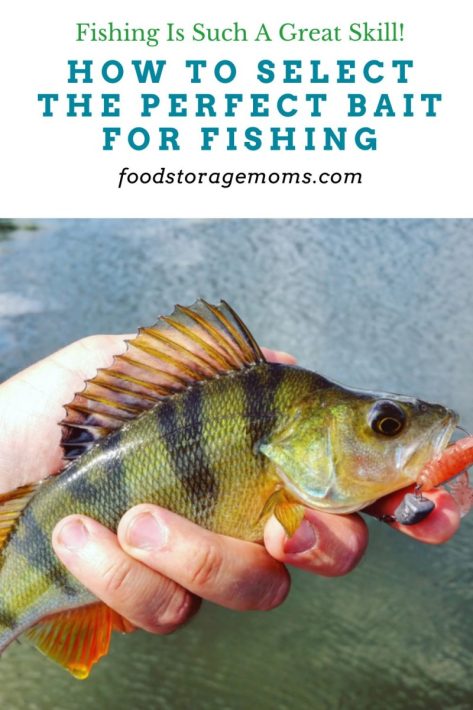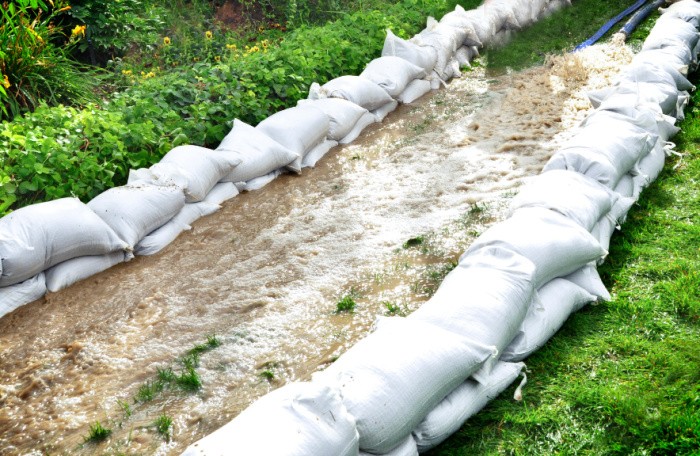How to Select the Perfect Bait for Fishing
Fishing is not just about the thrill of the catch; it’s also about the art of enticing your target. And what better way to do that than with the perfect fishing bait? Whether you’re angling for bass in freshwater lakes or casting lines for trout in babbling streams, choosing the correct type of bait can make all the difference in fish catches for the day. As we’ll discuss below, different fish species like different types of fishing lures and baits. Today, I want to discuss selecting the perfect bait for fishing.

Natural Baits
Nightcrawlers: Nightcrawlers are a classic bait choice for many anglers. These giant, wriggling earthworms are irresistible to many freshwater fish, including bass, catfish, and panfish.
Another critter you may find in your lawn or garden is grubs. These small worm-like pests can do a lot of damage to your plants, so using them to fish is an added benefit from removing them from your yard.
In some areas where they can be caught and used as bait, leeches can be a very effective and inexpensive bait option. They are particularly attractive to gamefish like walleye, smallmouth bass, panfish, trout, and pike.
Minnows: Live minnows are another natural bait for freshwater and saltwater fishing. They can be rigged in various ways. They can be hooked through the lips or tail, to mimic injured prey and attract predatory fish like bass, pike, and walleye.
Other Live Meat Baits
Another live bait option is to use eels. Eels are often used to troll on the bottom of the ocean or lake.
Cut bait is a term used to refer to bait that’s prepared by cutting up a larger fish and using the small pieces as your bait. Be sure to check you local fishing regulations regarding how this may be applied in your state.
Crickets and Grasshoppers: Insects like crickets and grasshoppers are excellent bait options for enticing panfish, trout, and even bass in certain situations. Their natural movements on the water’s surface can trigger aggressive strikes from hungry fish. Natural Ways to Get Rid of Insects in Your Home
Shrimp: Fresh or frozen shrimp can be highly effective bait when fishing in saltwater or salty environments. Everything from snapper and redfish to tarpon and snook find shrimp irresistible. This makes them a versatile choice for coastal anglers. Why Storing Tuna is a Smart Move for Emergency Preppers
Artificial Lures as Baits
Soft Plastic Lures: Soft plastic lures come in various shapes and sizes, including worms, crawfish (often called crayfish), and swimbaits. Their lifelike appearance and action in the water make them a favorite among bass anglers. Still, they can also attract other predatory species like pike and muskie and even saltwater gamefish like redfish and speckled trout.
Spinnerbaits: Spinnerbaits combine flash and vibration to mimic the movement of baitfish. This makes them practical for targeting small and largemouth bass, trout, pike, and muskie in freshwater and saltwater environments. Their versatility and ability to be retrieved at different speeds make them a valuable addition to any angler’s tackle box.
Some people may think their spoons in the tackle box are the same as a spinner. In actuality, the spoons mimic the movement of a wounded fish to draw other fish. A spinner uses rotating blades that create a vibration and flashes from sunlight to attract fish. Both can be effective, but spinners tend to be more popular these days.
Topwater Lures: Topwater lures, such as poppers, frogs, and buzz baits, create surface commotion that triggers aggressive strikes from fish. Predatory fish like bass, pike, and even saltwater species like redfish and striped bass are attracted. They’re particularly effective during low-light conditions or when fish feed near the surface.
Jigs Are Popular Lures
Jigs: Jigs are versatile artificial baits used in various fishing scenarios, from bouncing along the depth on the bottom for bottom-dwelling species like walleye and flounder to swimming through the water column for bass and panfish. They come in various weights, colors, and styles, allowing anglers to customize their presentation based on the target species and fishing conditions.
Sometimes jigs are referred to as crankbait. They are made from hard plastic or wood, generally shaped like a baitfish or crayfish, and can have one or more hooks. They are designed to attract predatory fish like bass, walleye, and trout.
Another jig type of bait is called jerk bait. It is designed to mimic a struggling minnow so it will attract other fish. They are a larger lure and can be from 3-6 inches in length. You have to be careful handling these lures since they generally will have three very sharp treble hooks attached to their lower side and tail.
Finally, a football jig is a lure that’s designed to be used in very tight spots like docks and vegetation. The head of the jig is made in the shape of a football to keep the lure from catching on things.
Specialty Baits
Live Bait Alternatives: When live bait may not be practical or permitted, anglers can turn to alternatives like prepared baits or cut bait. This can include dough baits for catfish or commercially available scented baits for bass and panfish. These baits often come in convenient pre-packaged forms and the scent can make them just as effective as their live counterparts.
Fly Fishing Flies: Fly fishing enthusiasts have a vast array of artificial flies, each designed to imitate different aquatic insects, baitfish, and other prey items. From dry flies and nymphs to streamers and poppers, there’s a fly pattern suited to virtually every fishing scenario and target species, making fly fishing an art and a science.
More Tips
- 20 Reasons Why Fishing is Beneficial to Emergency Preparedness
- Beginners Guide to Fishing: 6 Amazing Tips and Tricks
- Take Your Kids Fishing: 11 Amazing Reasons Why
Final Word
When it comes to fishing success, choosing the right bait is half the battle. Understanding the preferences of your target species and the fishing conditions you’re facing, you can select the perfect bait to maximize your chances of hooking into that trophy-worthy catch. So, next time you’re gearing up for a fishing trip, don’t overlook the importance of selecting the perfect bait. It could make the difference between a day of frustration or triumph on the water. May God Bless this World, Linda
Copyright Images: Fishing Perch with Lure Depositphotos_113090354_S By Pixelery.com, Fishing Rod and Tackle Box with Bait Depositphotos_9240469_S By ArenaCreative






















I heard flash bangs work but I certainly wouldn’t know
In Germany we used corn to catch trout. It looks like a fish egg is what they told me
Survival fishing is a lot different than game fishin. Use a lot more trot lines n yo-yo’s than anything except maybe bow fishing. Ain’t no such thing as “trash fish” neither cause they all eat and/or make cut bait.
In flowing muddy rivers I’d also attach a piece of tinfoil or gum wrapper to the hook cause even after the bait is gone the catfish can smell it and the reflection and motion in the current will make them grab hold.
HI Matt, I agree survival fishing will be different for sure. Great reminder about “trash fish”! Love it! Musband used to go out at night and get earthworms from the lawn. I had nephew put himself through college selling the worms. Great. memories. Learning to fish will be a skill everyone will need sooner than later. That story about corn looking like fish eggs is golden!! Love it, Linda
never had much luck with fishing lures or plastic worms, I use worms, grasshoppers and crawdads.
Like Matt I have used corn, I’ve used McDonald’s hamburgers just anything. Cheaper than buying a bunch of junk that don’t work. Only thing I never tried is Noodling, not that brave. Now I couldn’t do it if I had too.
Hi June, that’s what my family uses is worms. I’ve never done Noodling. I would need my grandkids to go fish for me! Mark loves to fish and we can fish one block away. I agree with the expensive stuff people buy. Worms or corn or leftover McDonalds hamburger would work great! Linda
I’ve always been a fan of live bait, but in Colorado I used salmon eggs to catch trout. My grandfather used to make what he called stink bait (like dough balls) for taking catfish. Never have done any salt water fishing but I’d like to.
Hi Ray, trout was actually the first fish I tried when I met my husband in Utah. I grew up on barbecued bass in California. Trout is not my favorite! LOL! Mark’s mother didn’t take the bones out, so I was shocked and gagged over the trout. It’s just me! LOL! Linda
Something else you may want to get in the habit of doing is checking out the contents of the stomach when cleaning your fish. It will sometimes tell you what the fish are eating, so you know what to use the next time you go out…
HI Carl, oh that’s a great tip! It would help to know what their eat but also how to catch them! Good one! Linda